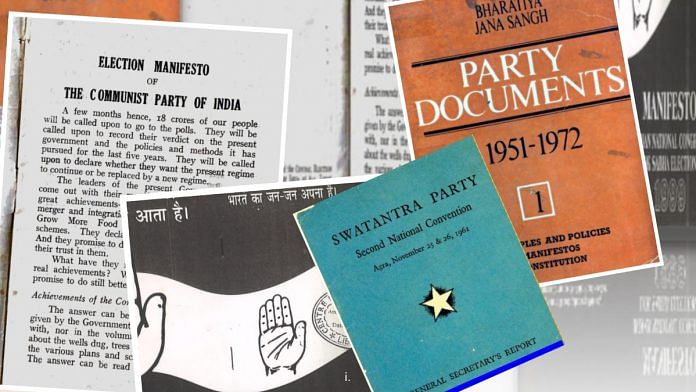Do manifestos of political parties play any meaningful role before, during and after elections? Are they powerful symbols of the ideas, vision and programmes offered by a party to citizens or are they merely symbolic? Since most voters don’t bother to read manifestos before casting their ballot, why not relegate manifestos to the dustbins of oblivion?
Despite such questions raised every now and then by sceptics and cynics, manifestos remain significant to parties in articulating her future plan, course of action on key issues and ideological vision.
However, the election manifestos in India have received rather scant attention in comparison to European and North American Countries. For example, the Comparative Manifesto Project (CMP) is a collaborative global exercise that converts promises made by rival parties in various countries of the world into statistically measurable and comparable parameters. Unfortunately, Asian and African countries are largely missing from this exercise. Furthermore, the CMP methodology may not work for a diverse country like India, with a proliferation of political parties whose ideological visions are always not very clear.
In this context, the Centre for Policy Research (CPR) devised a study protocol that maps out the Lok Sabha election manifestos of the Congress, the Bharatiya Janata Party (BJP) and the Communist Party of India-Marxist (CPI-M) since 1952. It would be important to note here that the study used manifestos of the Bharatiya Jana Sangh (BJS) instead of BJP for the period before 1980 and of the Communist Party of India (CPI) instead of CPI-M before 1971. These three parties represent the ideological spectrum of Indian politics, and the study maps the evolution of issues that matter to Indian democracy.
The study involved a large team of independent coders and researchers using “word count” — the number of words devoted to an issue in the manifesto — to arrive at statistically measurable parameters. Seven major issues (or domains) were identified for the purpose: national security, political competence, political systems, social fabric, economic planning, welfare, and development & infrastructure.
The results of this ambitious exercise are truly fascinating and offer a wealth of data as well as ideas to politicians, scholars, and journalists to dig deeper into specific issues confronting India that have attracted the attention of the major political parties.
The study of manifestos from 1952 also offers a ringside view of how deeply and structurally the polity, economy and society have changed since India’s first elections. Manifestos may be forgotten, but they have left behind lasting historical footprints.
Here are some interesting highlights:
Economic planning, welfare, and development & infrastructure have received a lot of attention in all manifestos of all three political formations. Together, these three domains account for 55% of the total words written in the manifestos. The context, however, has changed over the decades. The first four decades emphasised socialist models of economic planning with the BJP being the lone advocate of the private sector. The economic liberalisation in 1991 changed the nature of issues in this segment across manifestos.
Despite the rhetoric proposed by all parties of being committed to rural India, the percentage of words devoted to rural development within the development & infrastructure domain has fallen precipitously from 42% in 1952 to 5.6% in 2019.
The BJP continues to put a lot of emphasis on physical infrastructure in this century. Similarly, it has been emphasising national security, start-ups and self-reliance more significantly.
The Left continues to emphasise anti-imperialistic or “anti-American’ themes. It also gives a lot of space to labour rights and agriculture.
When it comes to foreign policy and national security, internationalism, external influence and foreign special relations dominated the discourse for the first four decades. The Congress’s emphasis was on internationalism while the CPI(M) focused on foreign special relations; in support of China/Soviet Union and opposed to the US. The BJP manifestos paid much more attention to the military during this period. Since the 1980s, with terrorism becoming more common, the BJP has dramatically increased its focus on internal security and terrorism. The INC and CPI(M) have not been as consistent in their focus on these two issues.
Over the decades, the1 focus of parties shifted, with the changing national and international conditions. As mentioned earlier, terrorism never found a place in manifestos until the 1980s, but it has become an important issue since then. Similarly, while economic planning and state intervention received a lot of attention in the first four decades, any issue related to free markets or economic liberalisation received barely any attention. That has changed dramatically since 1991.
Changing realities have also led to a new discourse. Environment and sustainability have become important issues since the 1980s. The first few decades did not see much attention paid to “urban” issues as India was overwhelmingly rural. But with increased urbanisation leading to a big chunk of voters living in urban clusters, urban issues now receive a lot more attention.
The shift towards welfare
Which topics appeared how much in party manifestos for the Lok Sabha elections by ranking
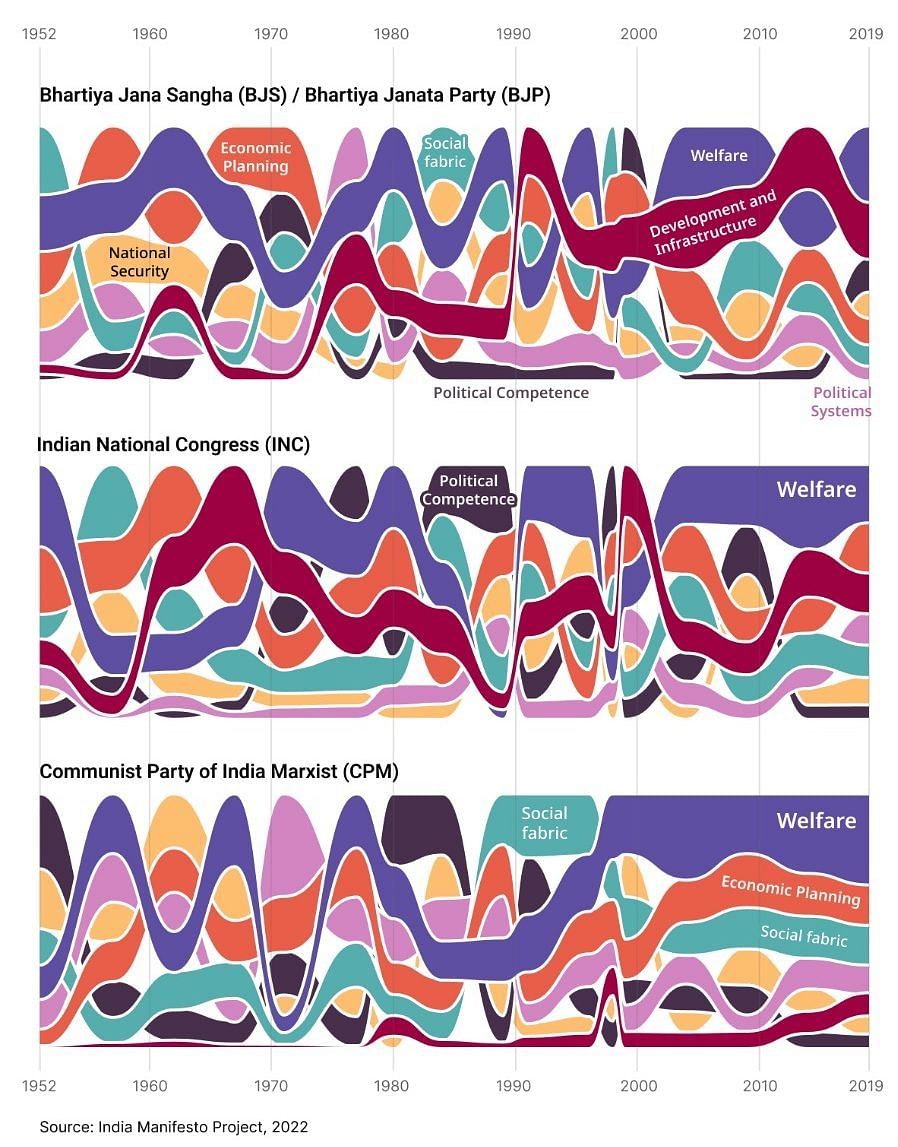
Political systems
Manifestos in the world’s biggest democracy, hardly talk about democracy
Percentage of content on political systems in Lok Sabha election manifestos used for different topics (1952-2019)
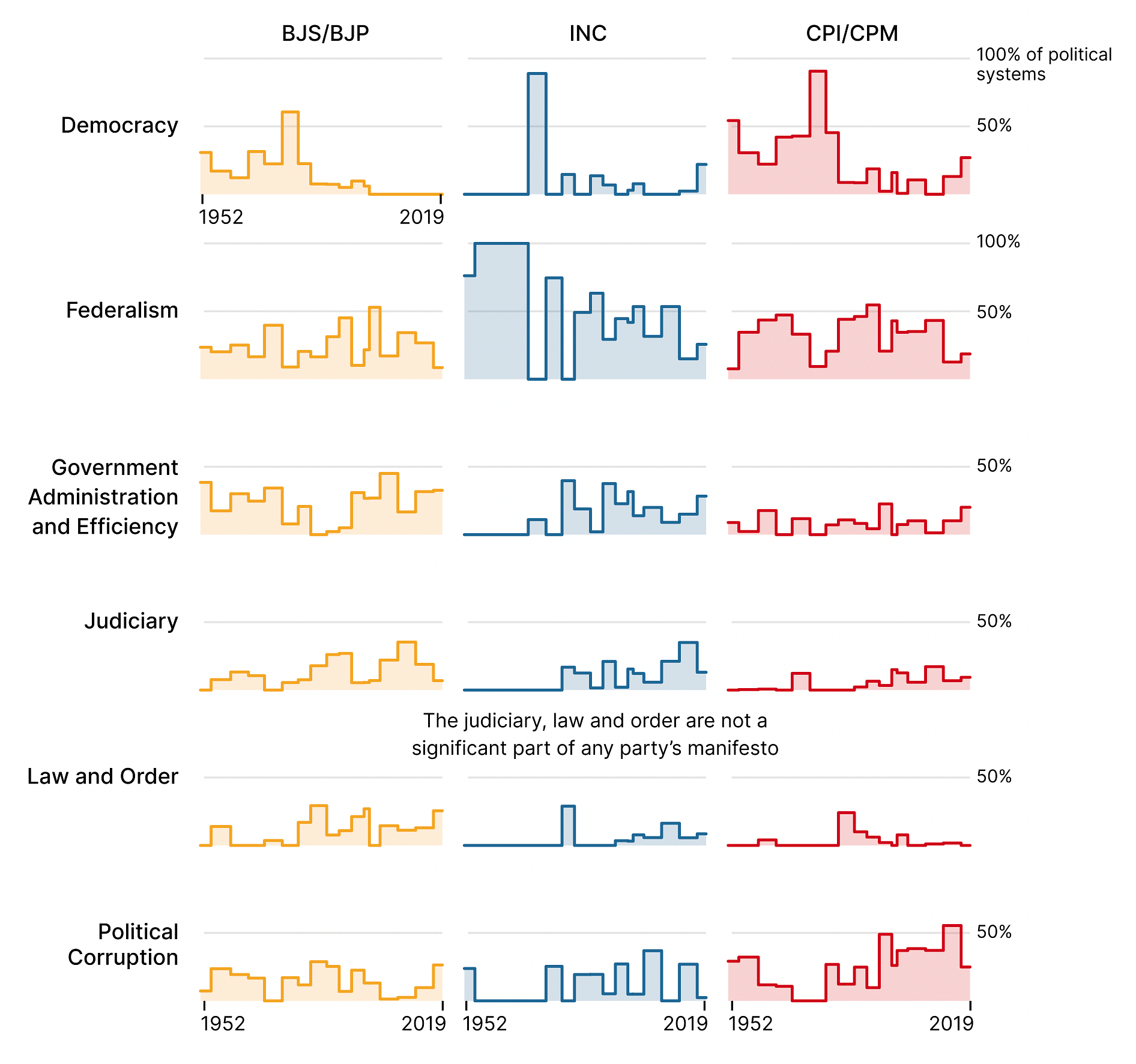
Development and infrastructure
BJP focuses on physical infrastructure, INC on sustainability
Percentage of development and infrastructure content in Lok Sabha election manifestos used for different topics (1952-2019)
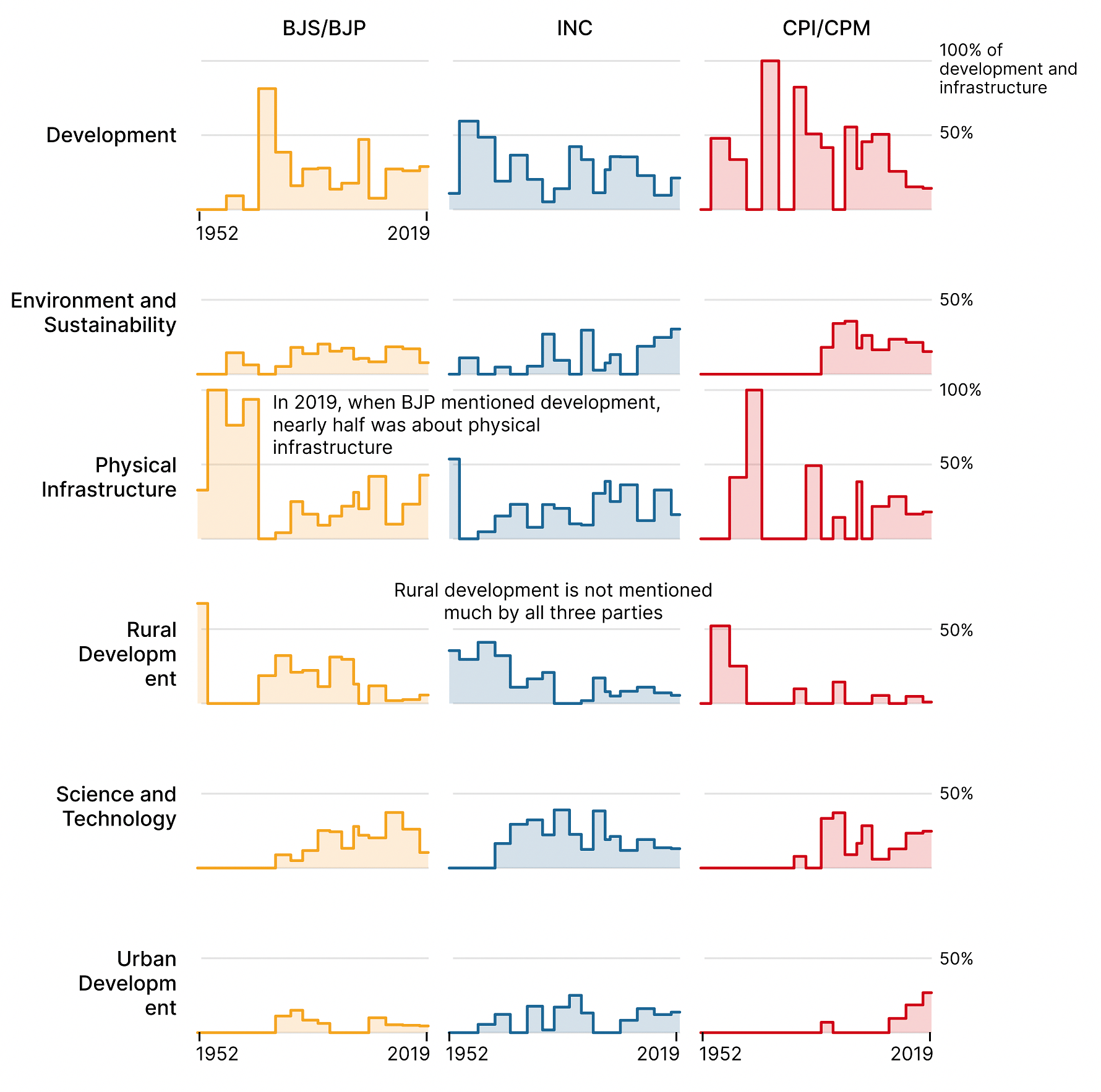
Welfare
Agriculture, heath and education are popular across parties
Percentage of welfare content in Lok Sabha election manifestos used for different topics (1952-2019)
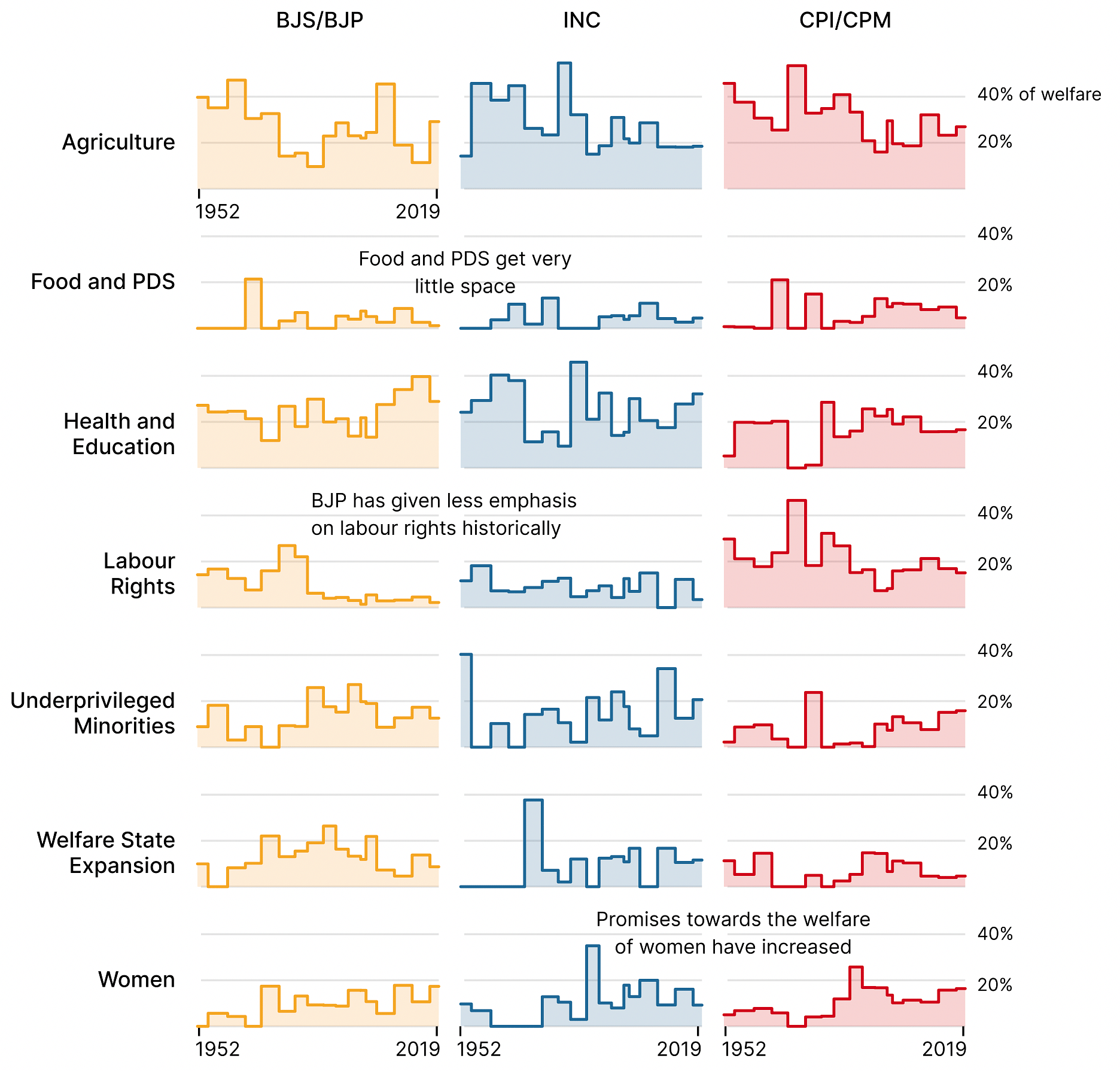
Social fabric
When parties talk of the social fabric in manifestos now, they mostly talk about caste and religion
Percentage of social fabric content in Lok Sabha election manifestos used for different topics (1952-2019)
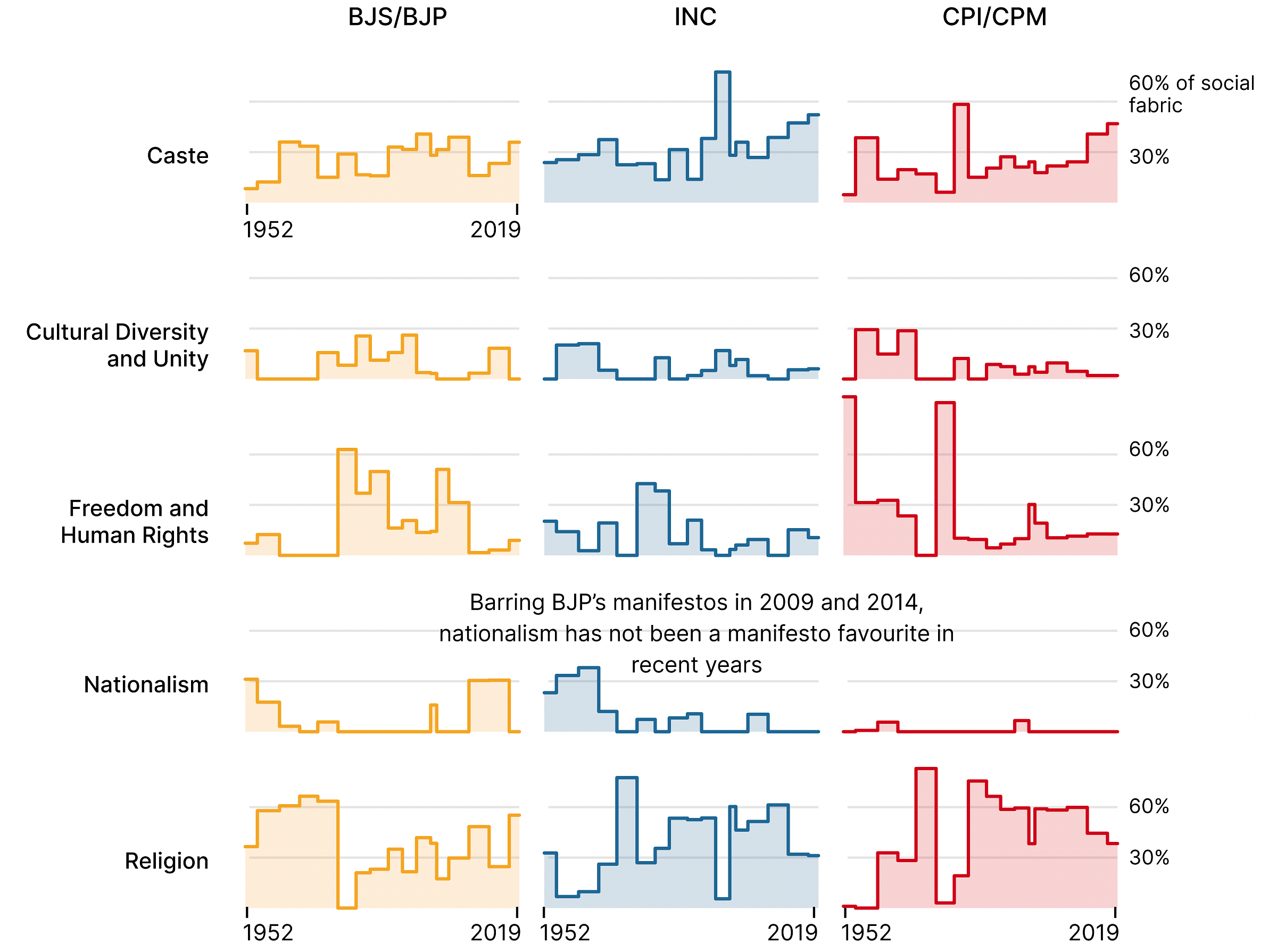
Economic planning
Parties often talk about economic goals in manifestos, seldom talk about inflation
Percentage of economic planning content in Lok Sabha election manifestos used for different topics (1952-2019)
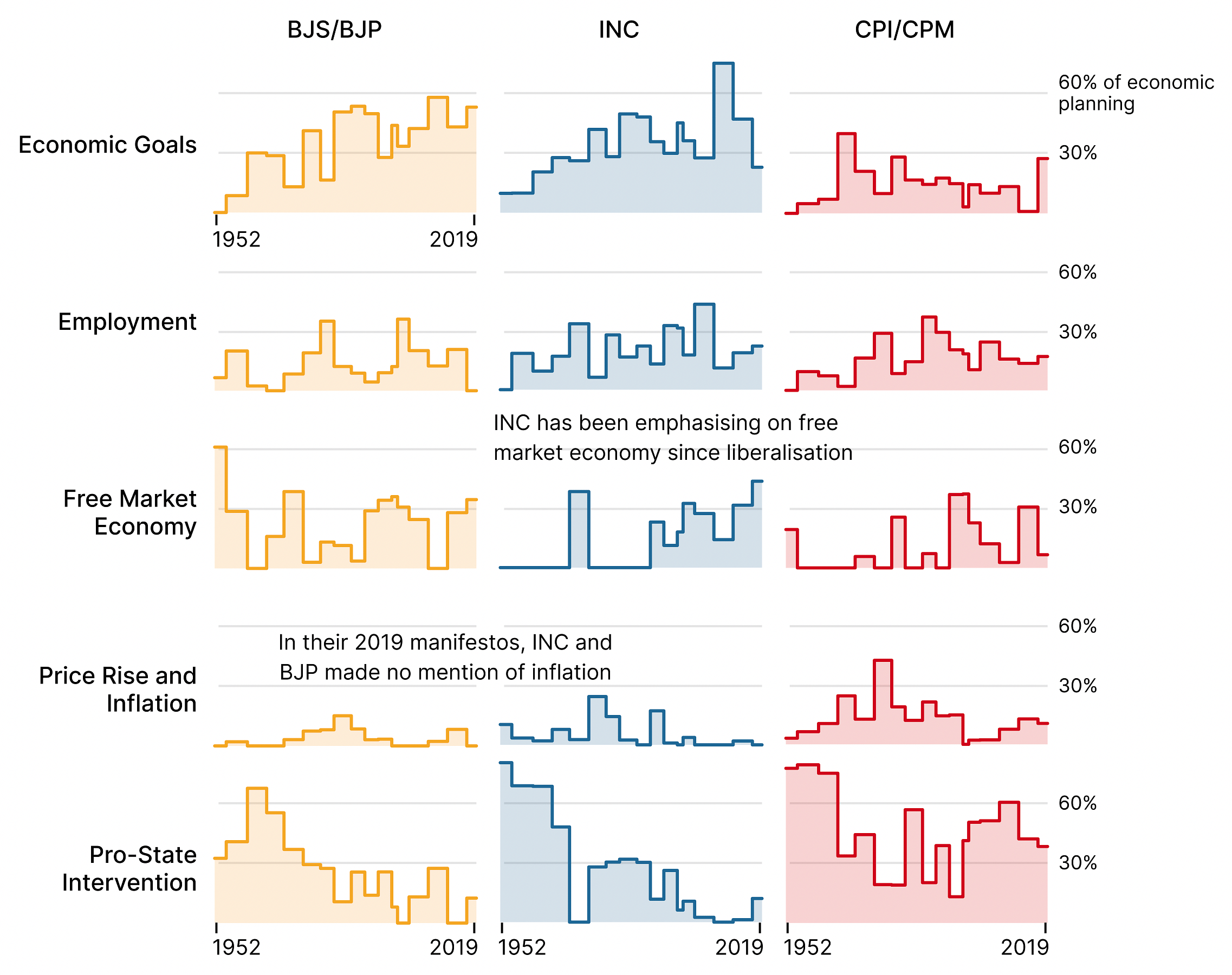
National security
When making promises on national security, BJP and INC talk of goals and the military
Percentage of content on national security in Lok Sabha election manifestos used for different topics (1952-2019)
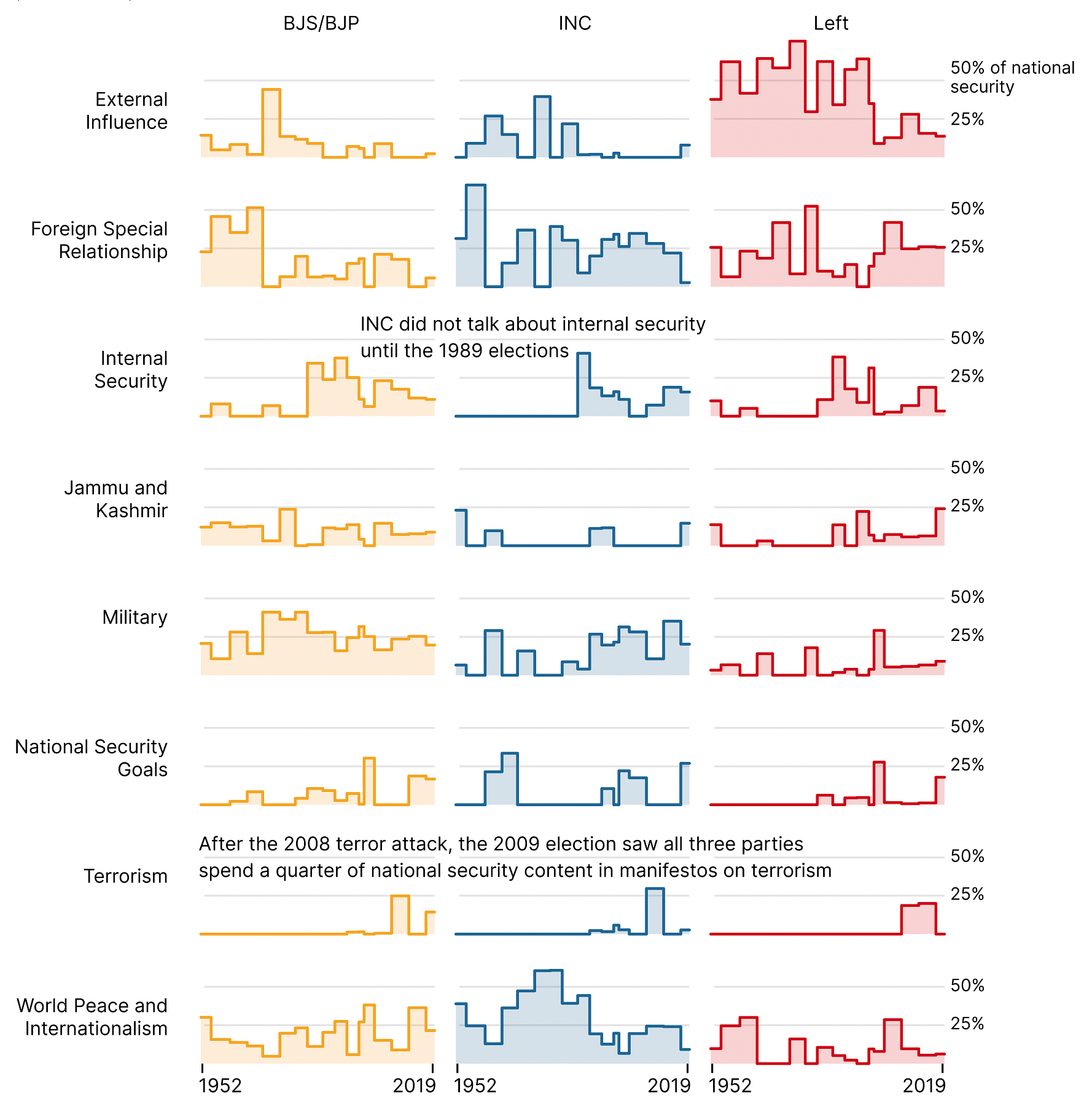
Rahul Verma (@rahul_tverma) is a Fellow at the Centre for Policy Research (CPR), New Delhi. He would like to thank all the researchers at CPR who helped in coding and analysing these manifestos, Pranav Gupta for helping in creating the codebook, and Gurnam Bhatia for visualisations.
This article is an edited excerpt from Promises That Matter to Indian Democracy: A Study of Election Manifestos Since 1952, first published in September 2022 by the Centre for Policy Research, New Delhi.


